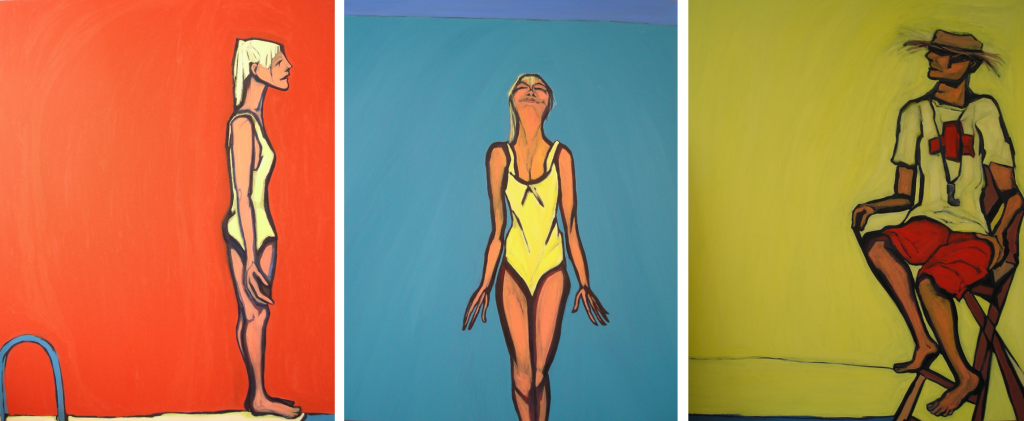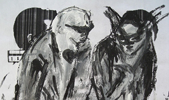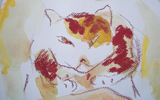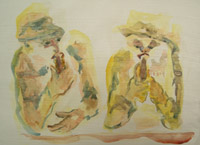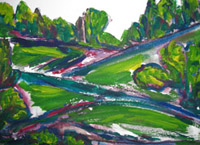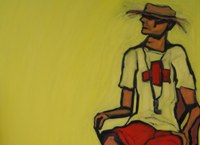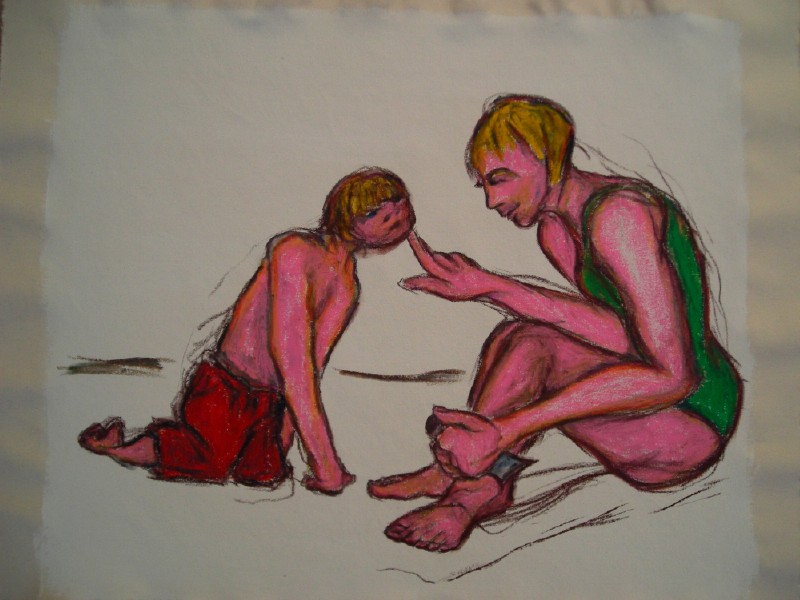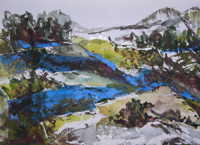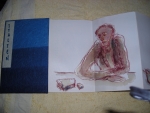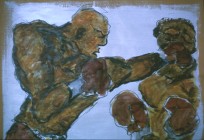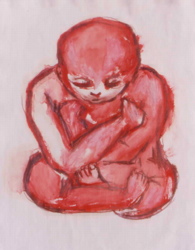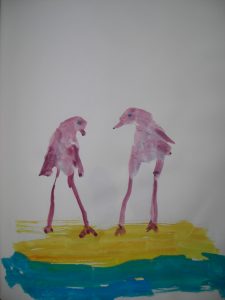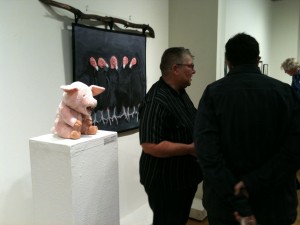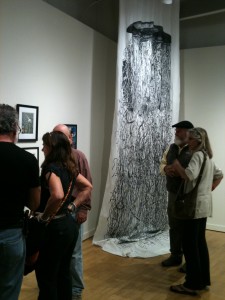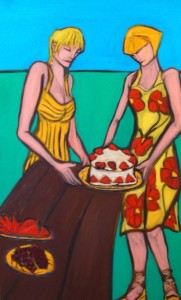
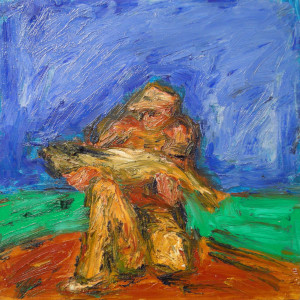 This is a time for thinking about gifts and giving. I have just spent weeks calling friends- artists, gallerists, collectors— and asking them to donate artwork to an art auction fundraiser. This year it is to benefit the Richmond Art Center. But I have called upon the same marvelous people in the past to support other art auction fundraisers. And these individuals, members of a small community, have all said yes. Every single one of them. It is a level of giving unimaginable in any other population. But artists support each other and the art culture which nourishes us all.
This is a time for thinking about gifts and giving. I have just spent weeks calling friends- artists, gallerists, collectors— and asking them to donate artwork to an art auction fundraiser. This year it is to benefit the Richmond Art Center. But I have called upon the same marvelous people in the past to support other art auction fundraisers. And these individuals, members of a small community, have all said yes. Every single one of them. It is a level of giving unimaginable in any other population. But artists support each other and the art culture which nourishes us all.
Artists give. They are asked on every occasion and they make a generous gift of that which they produce, that over which they have labored, that to which they have devoted their time, energies, and material financial investment.
At the opening of the exhibition, Closely Considered: Diebenkorn in Berkeley, a woman came up to me and said, “ I have Diebenkorn drawings.” One might imagine my eyes lighting up with interest, my brow rising with curiosity, my torso leaning toward this stranger. “ Oh ?!?!” Yes, Diebenkorn and his drawing group had engaged her father as a reader, reading poetry, or plays, as they drew. And at the end of the evening the drawings were spread on the floor and her father could choose a drawing for himself. Models will relate similar tales of art gifts.
Joe Slusky, a long-time friend of Elmer Bischoff, was invited by Bischoff’s widow, Adelie, to make a selection from a pile of drawings. Joe used these for years in teaching his own students. John Seed has written of the gift made to him by Lydia Park, the widow of David Park.
We love to make gifts and we begin with delight when we hand a painting to a parent, present a drawing of a hot rod to a friend, exchange a figure study with our cohorts in art school, or unveil a portrait to a lover. We are bound by these connections. Especially the exchange between artists carries a deep degree of sympathy and identification.
The joy of receiving such gifts is often followed by the torment of a later dilemma. Often the recipient of a gift of art is faced with the question of selling the painting or drawing or object for much needed financial benefit. John Seed sold his Park drawings, the recipient of a Diebenkorn cigar box sold his precious object, family members have sold paintings which seemed the embodiment of the artist himself. The transformation from gift to asset can strike hurt or anger in the donor. Anselm Kiefer was duly upset to have an old classmate ask him to sign a gift from student days, thus enhancing the market value.
It is an historical dilemma. When we read the letters of Camille Pissarro to his son, Lucien, we read of the ever present pull to sell a work given him by Degas. With a large family and in despair over money and lack of sales of his own work, Pissarro felt torn between having his beautiful Degas artwork and needing money for the maintenance of his family. Certainly the fact that the sale of an artwork can provide a struggling artist with a studio, the means of developing his own work, or the freedom from debt should only be met by delight by an artist who has had the historical good fortune to realize economic reward through his art.
Institutions may face similar choices. When the Royal College of Art put their Francis Bacon painting to auction, they were making a calculated assessment of what would be of greater benefit to their students: the painting on the college wall where it could be regarded in long contemplation, or the monetary compensation which could provide studio space for their students’ own artistic development. These questions appear to be of a different texture because they concern gifts, not a purchase converted to a different instrument, but a turning away from the nature of a gift and the relationship for which it stands.
For the most part we might be able to divine that an artist, as Bacon, would relish whatever a painting might fetch in exchange, even if only relief from a gambling debt. For the most part, artists are pleased that the painting or drawing or print or sculpture or photograph they donate can help an artist who is ill or has left a struggling widow — we remain connected to Degas and his friends who organized the exhibition of work to be sold to help the family left behind— we follow in a tradition of supporting those who live and breath the same cavernous spaces or solvent soaked air.
Ultimately it falls to our small community to support the teaching, the art making, the sustenance of the artist and the maintenance of the art. What strikes me in these days of winter as we gather together in support of the Richmond Art Center, an institution with eighty years of history exhibiting artists and nurturing their development, what stands out for me in bold black and white, what shouts out in vibrant color, is the humor maintained by our artists, the faith maintained by our gallerists, and the grace with which all is given.
Which is to say, it is awesome.
-Jan Wurm
November 25, 2015
In preparation for the Richmond Art Center Holiday Arts Festival Auction on Saturday, December 5th supported by
Richard Ambrose, Jean Cacicedo, Enrique Chagoya, Judy Dater, Gene Erickson, Claire Falkenstein Foundation, Katie Hawkinson, Ellen Hauptli, Ana Lisa Hedstrom , Ray Holbert, John Hundt, Diana Krevsky, Carol Ladewig, Hung Liu, Malcolm Lubliner, Kara Maria, Juan Carlos Quintana, Hilda Robinson, Kay Sekimachi, Nancy Selvin, Richard Shaw, Joe Slusky, Livia Stein, Terry St.John, Inez Storer, John Wehrle, Heather Wilcoxon, Paulson Bott Press, the Jack Fischer Gallery, Dolby Chadwick Gallery, and Danny Aarons.
